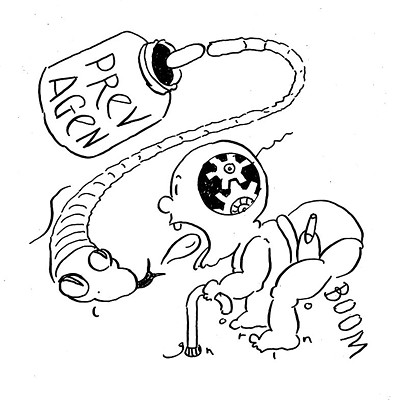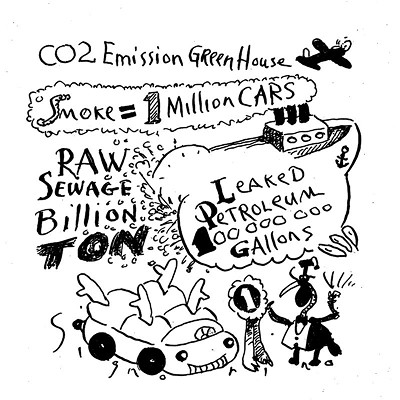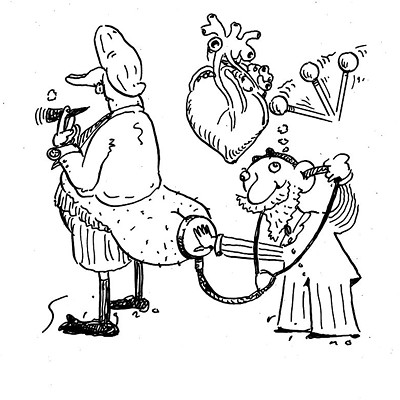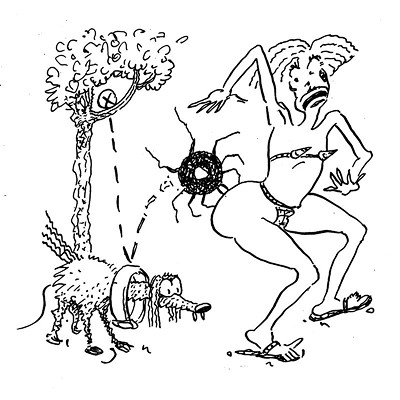I recently heard a rumor that sugar processed from beets contains traces of a poison used as a combat weapon in World War II. Is this true? What's the difference between beet sugar and cane sugar, anyway? - tomlobur
A good rumor, which this is, is like an Indiana Jones movie. There's a grain of truth, life and death are at stake, and you know Nazis are somehow involved.
First the scholarly intro. Prussic acid, better (and more scarily) known as hydrogen cyanide, is a toxic chemical that kills through metabolic asphyxiation, meaning it destroys your body's ability to use oxygen. You can be poisoned by inhaling it, eating it, or absorbing it through your skin. It's widely found in nature: many plant seeds, including apple seeds, cherry and peach pits, and bitter almonds, contain amygdalin, which metabolizes into cyanide if the seeds are eaten.
Prussic acid is also a by-product of beet sugar production, and a method of obtaining the chemical from beet-molasses wastewater (the liquid left over after you get the sugar out) was patented in 1915. Although prussic acid has its benign uses, its most infamous application was as the main ingredient in Zyklon B, the Nazi death camp gas.
Developed as a pesticide, Zyklon B was manufactured during World War II by the German company Dessauer Werke fÜr Zucker und Chemische Industrie (Dessau Works for the Sugar and Chemical Industry). It sold Zyklon B to another firm, Degussa, which put it into the distribution chain that got it into the hands of the SS. In an effort to come clean about its past, in 1998 Degussa commissioned Northwestern University historian Peter Hayes to examine the company's Nazi connections. His findings are summarized at degussa-history.com.
"By 1936," the site notes, "Dessauer Werke . . . was the only manufacturer of [Zyklon B]. The prussic acid required came from Dessauer Schlempe GmbH, which extracted the highly poisonous substance from the waste produced when processing sugar beet." Though 99 percent of the Zyklon B produced during WWII was used for delousing and other pest control, Hayes concludes that the SS used the remaining 1 percent to murder about a million people.
The Nazis weren't the first to see prussic acid's potential as an agent of mass slaughter. The chemical had been used as a weapon in World War I by the French and, some claim, by the Japanese against China around the start of WWII.
So does all this mean there's cyanide in the beet sugar we eat? Try to keep up-prussic acid is a by-product of beet sugar refining, not the product. Here's a useful little test: last time you ate anything containing beet sugar, did you turn blue and die? If not, don't worry. Sublethal cyanide doses such as are found in seeds and pits (and for the sake of argument, beet sugar) are detoxified by the body and excreted; the stuff doesn't accumulate.
What's the difference between cane sugar and beet sugar? A perfectly accurate answer is "not much"-table sugar is 99.95 percent or more pure sucrose, which is chemically the same whether it comes from cane or beets. However, since commercial advantage is at stake, you do get people arguing about the significance of the .05 percent.
The real question is whether cooks see any difference between beet and cane. Food staffers at the San Francisco Chronicle did some head-to-head testing in 1999 and reported that cane made significantly better cookies and subtly better pound cake. They also had real trouble getting crème brÛlée to caramelize properly with beet sugar, ending up with burnt topping instead.
Always game for an experiment, particularly when it involves food, my assistants Una and Fierra spent a night preparing crème brÛlée: three batches with beet sugar, three with cane. Result: The beet and cane versions were indistinguishable in appearance, but the cane batches tasted sweeter, their caramelized topping especially.
It was a Pepsi vs. Coke difference, though: while Una preferred the ones made with cane sugar, Fierra fancied the faintly bitter bite of the beet.
























